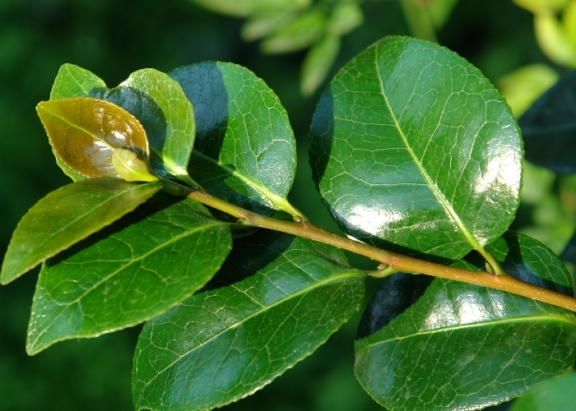
Common or Japanese camellia
Camellia japonica
Family and description
Belonging to the family Theaceae, genus Camellia, the Camellia japonica is an evergreen tree that can reach 15 metres in height. It has a rounded, highly branched crown and a smooth, greenish-brown trunk.
Its leaves are ovate or elliptical, with an acute apex, serrated, short-petiolate, leathery, glossy on the upper side and about 4 to 10 cm long.
Its flowering period varies according to the climate. The hermaphrodite flowers are arranged at the end of the branches, solitary or in pairs. Varying in size from 3 to 12 cm in diameter, they have a calyx with 5 to 6 imbricated sepals and numerous ovate petals of different colours (white, pink, red).
The fruit, a capsule, ripens in September. It is globular in shape and 4 to 5 cm in diameter. When it opens through the valves (3 to 5), large seeds are revealed.
Origin and habitat
The camellia is native to Japan, Korea and China, where it is found in humid forests.
It is not very tolerant of very high temperatures or cold winds. It favours sandy, acidic, well-drained soils rich in organic matter. The species appears from sea level up to low mountainous areas.
Uses and curiosities
Used as an ornamental, it can be found in gardens, parks and streets. The species has some medicinal properties and is used in teas and infusions. Its seeds produce an oil, tea seed oil, which is used in Japan for massages and making lotions.
The name Camellia honours the botanist and zoologist Georg Joseph Kámel, who was responsible for bringing the camellia tree to Europe.
It is propagated by cuttings, grafting and air-layering.
